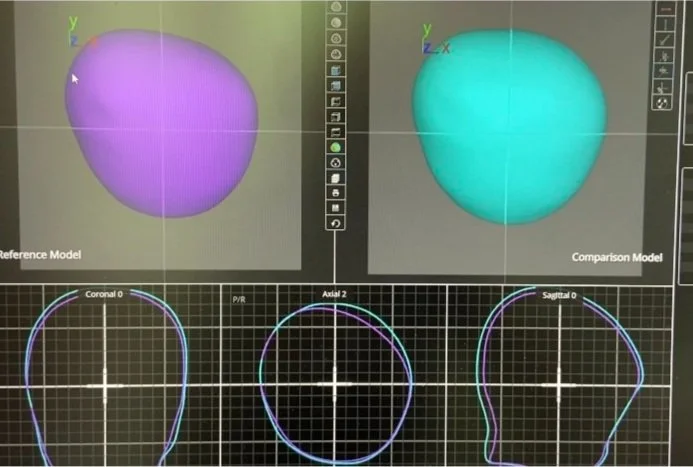How Quickly Can I Expect to See a Change in My Baby’s Head Shape When Wearing a Helmet?
When your baby starts wearing a cranial remolding helmet to treat plagiocephaly (flat head syndrome) or brachycephaly (widened head shape), it’s natural to wonder: How soon will I see a difference? While every child is unique, there are some key factors that influence how quickly head shape correction can occur. Let's take a look at what impacts helmet therapy timelines and how growth plays a big role—especially in younger babies.
The Role of Age in Head Shape Changes
One of the biggest predictors of fast improvement is your baby’s age. Babies between 4 to 6 months tend to experience the most rapid growth, which means their skulls can reshape more quickly with the help of a helmet.
As babies get older, head growth slows, especially after 12 months. That’s why early intervention is key to maximizing results with shorter treatment times.
Severity of Head Shape Asymmetry
The more severe the flattening, the longer it may take to correct. During your initial consultation, clinicians will measure:
CVA (Cranial Vault Asymmetry) for plagiocephaly
CI (Cephalic Index) for brachycephaly
Mild cases might resolve in as little as 6 to 8 weeks, while moderate to severe cases could require 3 to 4 months or longer.
Read this article for a better understanding of head shape types and lingo.
Helmet Wear Schedule and Consistency
For helmet therapy to be effective, consistency is key. Most babies are advised to wear their helmets 23 hours per day with only short breaks for cleaning and skin checks.
If the helmet isn’t worn consistently, the results can be delayed—even if your baby is growing quickly. Sticking to the schedule ensures the best chance for timely correction.
Related: Flat Head Syndrome: How a flat spot can get worse and better
Growth Patterns and Development
Every baby grows at their own pace. Periods of rapid growth spurts often lead to more noticeable and faster head shape improvements.
That’s why helmet therapy is most effective during peak skull growth, which typically happens before 12 months of age. The earlier treatment starts, the more potential there is for reshaping.
Frequency of Adjustments and Follow-Up Visits
Cranial helmets are not one-size-fits-all—they require regular adjustments to keep up with your baby’s growth and progress.
Follow-up visits every 2-3 weeks allow your orthotist to:
Reassess head shape and growth
Modify the helmet for continued progress
Ensure a safe and comfortable fit
Skipping or delaying visits can slow down or reduce the effectiveness of treatment.
What to Expect: Timeline Examples
Here’s a general idea of what you might expect:
Mild flat spots: 6–8 weeks of helmet therapy
Moderate cases: Around 2–3 months
Severe asymmetry: 3–4 months or more
Many families begin noticing visible changes in as little as 2–4 weeks, especially if treatment starts early and the helmet is worn consistently.
Related: This is How Long Babies Typically Need a Helmet for Flat Head Syndrome
Related: What to Expect During the First Two Weeks of Helmet Treatment
Final Thoughts
Helmet therapy is a powerful and effective way to help correct your baby’s head shape. While the timeline varies based on age, severity, growth, and consistency, most parents see encouraging progress within weeks.
The earlier you begin, the greater the potential for a shorter and more successful treatment.
Wondering if your baby might benefit from a cranial remolding helmet? Contact us today to schedule a free consultation and get started on your baby’s journey to a rounder, healthier head shape.





